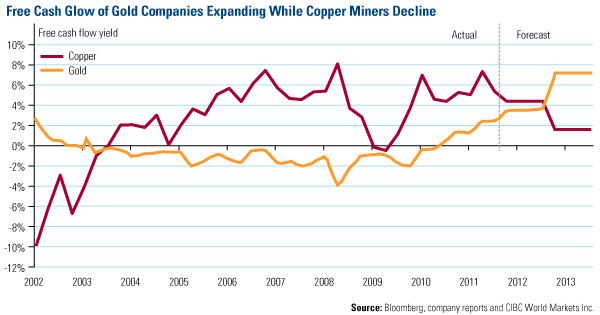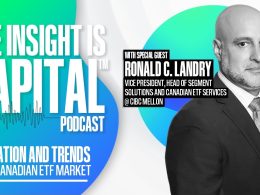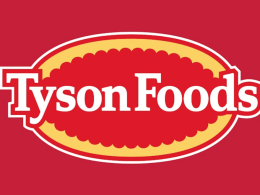Gold Market Radar (February 13, 2012)

For the week, spot gold closed at $1,722.00 down $4.25 per ounce, or 0.25 percent. Gold stocks, as measured by the NYSE Arca Gold Miners Index, fell 3.29 percent. The U.S. Trade-Weighted Dollar Index was essentially flat with a gain of just 0.2 percent for the week.
Strengths
- Harmony Gold was one of the few companies to report strong operational quarterly results this week. Gold production increased 5 percent to 345 thousand ounces in the quarter due to processing higher grades with reduced dilution, thus lowering the costs of production too.
- At the end of January, Harmony came to an agreement to sell its Evander mine in South Africa for $217 million in cash. This transaction lowers Harmony’s South African exposure and puts a hefty cash injection into the company.
- The timing for both the operational improvements and the sale of Evander could not come a better time as Harmony owns 50 percent of the massive Wafi-Golpu gold-copper porphyry deposit in Papua New Guinea. The latest drill results pulled a core length of 961 meters containing 1.37 percent copper and 1.39 grams per ton of gold. While still early on, the average copper and gold grade for the deposit is higher than the company maker mines of Grasberg for Freeport McMoRan Copper and Gold and Oyu Tolgoi for Ivanhoe Mines.
Weaknesses
- Nevsun Resources had a terrible week, seeing its share price drop 38 percent. Fortunately, we had very limited exposure to this company.
- What sent Nevsun’s share price tumbling was a near 50 percent cut in expected gold production in 2012 as its reserve calculation on contained gold content was significantly off the mark.
- Overall, price momentum in the gold sector faded this week and there were still a few new financings announced which tend to cap share prices in the short term.
Opportunities
- HSBC published a recent report on the investment case for gold titled “Gold Outlook, Sharpening the bull’s horn” which argues for an average gold price of $1,850 per ounce in 2012 with a price range of $1,450 to $2,050.
- While recent economic data has been positive, HSBC notes a survey by the World Economic Forum that shows global risks in 2012 are expected to increase. This, coupled with a general loss of investor confidence and eroding trust in the financial system and government policies have historically been supportive of higher gold prices.
- In a recent issue of Market Musings & Data Deciphering, David Rosenberg highlighted Japan’s recent announcement that it has been quietly intervening to weaken the yen. The U.S. and Europeans also have been intervening in the markets to achieve a more competitive currency relative to their peers. David notes that getting the ratio of the gold price to global currency in circulation makes $3,000 gold quite attainable.
Threats
- Mark Cutifani, CEO of AngloGold Ashanti; Graham Briggs, CEO of Harmony; and Steven Letwin, CEO of IAMGOLD were recently interviewed by Mineweb at the Indaba Mining Conference in South Africa. Mr. Cutifani noted that at a gold price of $1,650 per ounce miners are only just returning the weighted average cost of capital for the industry.
- Mr. Briggs confirmed Mark’s view on costs. Mr. Letwin pointed out that many of the large low grade deposits considered for development would be very difficult to produce gold at less than $1,200 per ounce.
- Mark Bristow, CEO of Randgold, chimed in too that in much of the industry, the mined grade, the actual processing grade, is running higher than the reserve grade at the mines. While companies are adding additional resources to the resource base because higher gold prices are being used to calculate lower cut off points for economics, those additional ounces are very marginal and higher prices will be needed if the world wants more gold.











